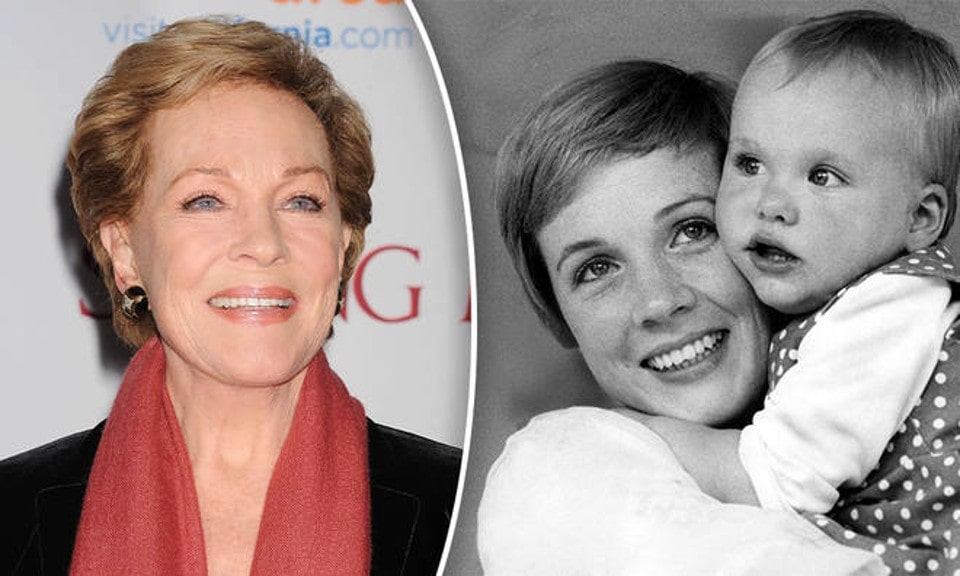In the two great movies Mary Poppins and The Sound of Music, Julie Andrews is best remembered for her portrayals of the powerful female characters Maria Von Trapp and Mary Poppins. But when she discovered a cyst in her vocal cord, her well-known singing voice was in danger. Her voice has not sounded the same since the operation.
Dame Andrews was dismayed to learn that she needed surgery to remove a benign lesion after doctors were astounded by her exceptional four-octave vocal range and an almost “adult larynx” when she was only a youngster. The singer’s operation also had an impact on her mental health; she assumed it was merely a “normal treatment” after experiencing voice issues when singing on Broadway in 1997.
The 85-year-old provided additional information on the procedure in 2015, stating that it addressed a “weak area.” She agreed to the operation in New York City after being assured by doctors that it wouldn’t harm her ability to sing. But when she awoke, the voice that countless people had come to know and love had been permanently altered.

Her late husband, Blake Edwards, stated in an interview from 1988: “I don’t think she’ll sing again. Absolute tragedy, that is. The singer’s once-impressive, crystal-clear voice was changed to a rasp, endangering the rest of her career.
The celebrity reflected on the incident in 2019 and admitted: “I fell into a despair. I felt as though I had forgotten who I was. Dame Andrews suffered such terrible consequences that she sued her medical professionals and the facility where the surgery was performed in 1999.
The effects of the surgery, according to her, “ruined her capacity to sing” and prevented her from engaging in her line of work as a musical performer, and she claimed that doctors had not adequately disclosed the hazards of the procedure. Although the two sides achieved a certified settlement in 2000, Dame Andrews’ former singing voice was not replaced by this.

Dame Andrews made a valiant effort to regain her singing voice following surgery. She achieved this through voice training and another surgery designed to extend the residual vocal tissue and remove some of the scar tissue.
However, this only helped her voice when speaking.
Ineffective surgery was widespread in the 1990s and frequently featured the use of forceps and lasers, both of which carried a significant risk of leaving vocal cord scarring.
The actress eventually came to terms with the fact that her vocals will not change after seeking counseling and confiding in a friend Barbara Walters in an interview. She instead turned to authoring children’s novels for solace, and most recently, she provided Lady Whistledown’s voice in the wildly successful Netflix series Bridgerton.
Vocal cord nodules: what are they?
Trauma to the vocal folds causes the development of vocal nodules. Vocal folds expand as a result of forceful vocal fold collision. These enlargements, which are frequently referred to as “soft nodules,” might worsen if left untreated. Scar tissue is then created as a result of this ongoing injury.
Soft nodules lose their ability to vibrate efficiently if they are not treated because the affected area stiffens. They turn into “hard nodules” at this point, which are very challenging to cure.
Vocal cord nodules are relatively common, and when a singer develops one, they frequently make the news, according to Great Ormond Street Hospital (GOSH).
The overuse of the voice in youngsters causes them, yet they can affect persons of any age.

“Polyps are less prevalent and again have a history of trauma or abuse.”
Nodules are distinct from vocal polyps. They are bigger and more frequently linked to smoking than singing. However, nodules and polyps can both harm the body over the long run.
Symptoms and Signs
According to the British Voice Association, the first indication that nodules may be forming is when voices start to sound “cloudy” or husky. Due to the constant stress opera performers subject their voices to, voices frequently lose brightness and pitch range.
When this happens, a person’s speaking voice also starts to change. With repeated voice breaks, they may begin to sound notably harsh and breathy.
Resting your voice and receiving voice therapy are common treatments for the ailment. Surgery may be necessary if the nodules do not subside or disappear entirely, although like Dame Andrews, it has some risk.
Vocal folds are preserved today because to radically enhanced surgical methods. There is no reason why folks shouldn’t be able to recover completely from surgery with some vocal therapy.
Complications
In some circumstances, symptoms associated with nodules may also be a sign of laryngeal cancer.
Due to the voice box being affected by this illness, some people may permanently lose their ability to speak.
It’s critical to get medical assistance if you or someone you know exhibits any of the following symptoms:
a modification in your voice, such as hoarseness
trouble swallowing or swallowing pain
a growth or bump in your neck
a persistent cough
a chronic earache or painful throat
extreme cases, respiratory problems




